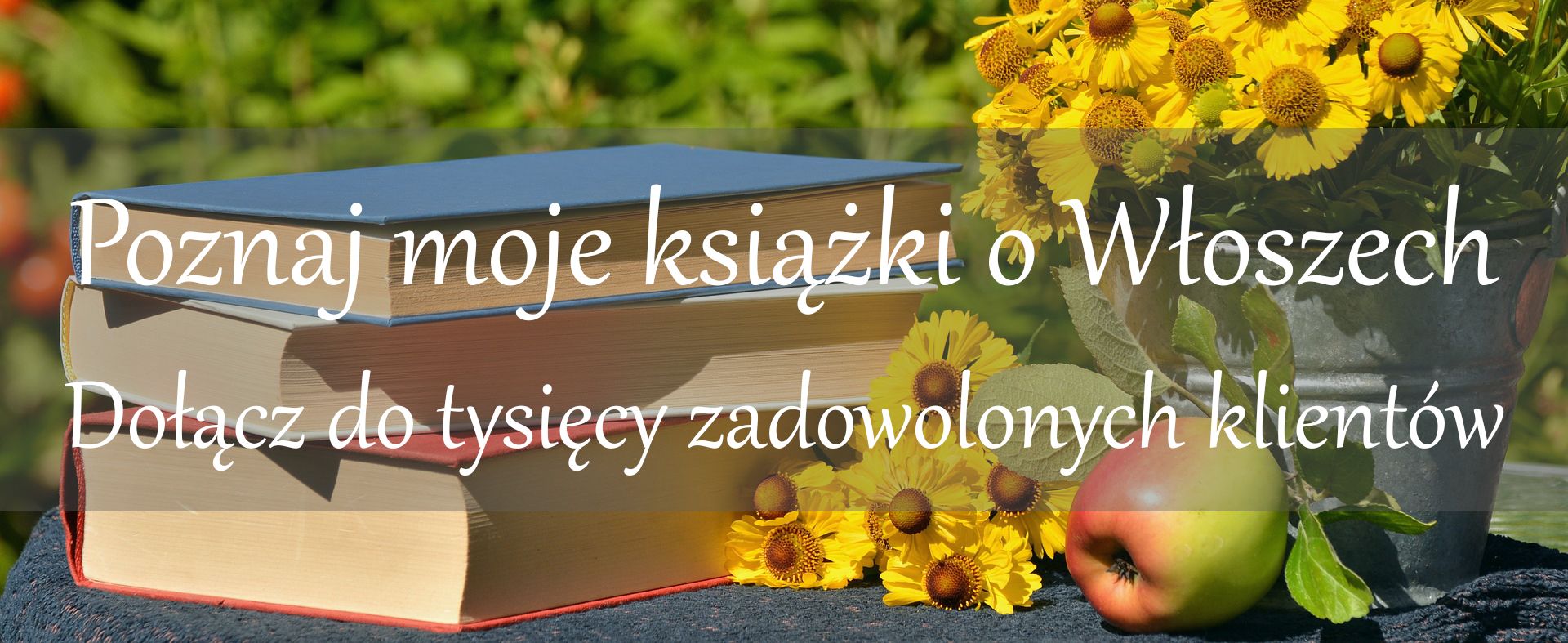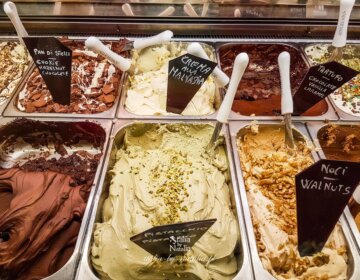
Historic cafés in Florence, once meeting places for intellectuals and artists creating in the 19th and 20th centuries, witnessed countless conversations around café tables. In these interiors, people discussed politics, sang and read literature, and ideas, mutual inspirations, and plans for the future were born. One of the most famous Florentine establishments even has Polish roots. A true treat for lovers of coffee, hot chocolate, and sweet pastries, sprinkled with a touch of history. See for yourseves!
Exploring Florence on a Culinary Trail
The capital of Tuscany is a city that lacks no attractions; one can endlessly admire works of architecture, painting, and sculpture, stroll through numerous gardens, and enjoy beautiful views. However, that’s not all, as Florence also offers local culinary specialties served in countless dining establishments, including historic cafés. Why are they considered a kind of attraction? These places — still accessible to the present-day visitors — were frequented in the past by people we now read about in books. Within these walls, important events took place, the lives of the elite unfolded, creations were made, discussions held, and conspiracies brewed. Historic cafés are not scarce in many Italian cities, including Turin and Venice, where to this day you can sit in the richly decorated interiors of Italy’s oldest café, which also offers seating in the famous St. Mark’s Square.
Caffe Florian in Venice – the oldest café in Italy, the most beautiful parlor in the world
Historic Cafés in Florence – Paszkowski
Originally founded in 1846 as Caffè Centrale, it entered a new era in 1904 when it came into the hands of the Polish Paszkowski family. The café was transformed into an elegant Viennese-style beer hall, quickly becoming an integral part of Florence’s cultural life. In the first decades of the 20th century, its lively interiors attracted numerous writers and artists. It was here that ideas for magazines that shaped the cultural face of the city, such as La Voce, Lacerba, and Il Selvaggio, were born.
In 1947, the café underwent a thorough renovation, regaining its former splendor and once again attracting intellectual elites. Its interiors — fortunately preserved in the spirit of the early 20th century — became witnesses to both poetic fervor and elegant fashion shows, which were held there for decades. In 1991, Paszkowski’s historical significance was recognized when it was declared a National Monument.
What can you order here? Various types of coffee, tea, numerous and delicious pastries, desserts, savory snacks, and cocktails. Prices are significantly higher than in other cafés, but that’s the norm in historic establishments, not only in Florence.
Historic Cafés in Florence – Rivoire
The second of Florence’s popular historic cafés specializes in chocolate and chocolate products, such as pralines, which can of course be purchased in beautiful packaging, perfect for a gift. The history of chocolate at Rivoire is a story of centuries-old tradition, where the craftsmanship of Italian masters has influenced the creation of true culinary art. It all began with Enrico Rivoire, a master chocolatier from Turin — the city where the history of chocolate-making on Italian soil began, which I describe in detail in my book “Italia – the land of contrasts and diversity. Northern Italy“. For decades, Turin was the seat of the royal House of Savoy, and chocolate was never missing from their tables.
Enrico’s skills quickly gained recognition, making him the official supplier of chocolate to the Italian royal family. After the unification of Italy in 1861, Turin briefly became the capital of the newly formed state, but its location at the far northwestern edge of the kingdom was very inconvenient. Therefore, the decision was made to move the capital, and before Rome ultimately took on that role, Florence was declared the capital. Enrico Rivoire followed the court to the banks of the Arno, and in 1872, near the Palazzo Vecchio, he opened the first chocolate factory. Thus, in the city of the Renaissance and the Medici, a sweet story began that still captivates with its taste and aroma.
At Rivoire, you can experience the elegance of a 19th-century café, immerse yourself in the luxurious flavors of thick chocolate, and savor creations that pay homage to tradition, enriched with subtle, contemporary touches. The Rivoire workshop is not only a place where classic meets modern, but also a space where masterpieces of confectionery are created. From the very beginning, Rivoire was and still is a temple of culinary delights, where every cup of hot chocolate holds a piece of 19th and 20th-century Florentine history.
That’s exactly how it is; today, Rivoire is a place for social and business meetings, and probably the best spot in Florence for a cup of hot chocolate with whipped cream. Not only do the tables set across from the Palazzo Vecchio invite you to indulge in sweet delights, but also the elegant, stylish interiors. However, I must tell you that even Rivoire can’t beat the chocolate from Turin.
Historic Cafés in Florence – Giacosa 1815
Founded in 1815 in Turin and moved to Florence in the 19th century, originally located on Via Tornabuoni. Today, Giacosa is in a different location, but still very close — on a street just off the famous luxury boutique district. The history of the Negroni cocktail is tied to this café. In the early 1920s, within the walls of Giacosa, Count Camillo Negroni, “driven by imagination and greed,” added a dash of gin to the “Americano” cocktail he drank daily with friends. Thus, he accidentally created a cocktail combining gin, vermouth, and Campari, which was named after its creator — the Negroni cocktail.
Today’s Giacosa is very elegant. At the tables in the small room, you can enjoy coffee and one of the wonderful creations from the local pastry chef. From personal experience, I recommend the pistachio cake (pictured above). Delicious! Definitely worth trying.
Historic Cafés in Florence – Gilli
In 1733, the Gilli family came from distant Switzerland to Florence. It was here, on Via dei Calzaiuoli, that they opened the La Bottega dei Pani Dolci shop, which soon attracted crowds, enticed by the aromas of sweet delicacies filling the air. With the growing popularity of the street, the Gilli family expanded their shop in the mid-19th century, making it a popular meeting place for intellectuals and artists. In 1893, the café was moved to the Palazzo Levi on Piazza Vittorio Emanuele, where, in an elegant interior, not only pastries were sold, but also high-quality liqueurs. The café gained fame, and in 1917 — thanks to a modern coffee machine — it transformed into a prestigious caffetteria, attracting even more famous personalities, including artists like Marinetti and Soffici. The elegant interior and furnishings are today the best-preserved example of a Belle-Époque style café in Florence.
In the 1990s, Caffè Gilli experienced a renaissance thanks to the Valenza family, who aimed to restore the café’s former glory. In 1991, it was recognized as a historical landmark and listed on the prestigious registry of Historic Italian Cafés. To this day, Gilli continues to charm with its allure and high-quality products, receiving numerous awards, including the Gambero Rosso award for excellence in serving coffee and delicacies, and in 2024 winning the local pastry competition for the best version of schiacciata fiorentina. Definitely try it, it’s delicious!
Wyświetl ten post na Instagramie
Vivoli Gelateria
Vivoli is a gelateria with a rich history, having started its operations in 1929 as Latteria Vivoli. In the difficult times after World War I, the Vivoli brothers, initially producing milk, decided to try their hand at making ice cream using the traditional method, bringing ice down from the Apennines. This was the beginning of their sweet creations, which quickly gained popularity, attracting Florentines to their small shop in the Santa Croce district, near the famous basilica. In the 1960s, Vivoli earned a reputation as a favorite meeting place for students, artists, and tourists who came not only to eat ice cream and whipped cream but also to enjoy the unique atmosphere of the place. Despite tough times, such as the flood that devastated Florence in 1966, the Vivoli family persevered, rebuilt the shop, and resumed ice cream production. Today, the gelateria has even opened a branch overseas, specifically in Disney Springs, Florida.
A few years ago, Vivoli was listed among the best ice cream parlors in Florence. However, I have never been a fan of this place; I had some good ice cream here in 2013, but it didn’t impress me. I returned eleven years later to try their dessert, which recently brought this place back into the spotlight. Affogato, a combination of ice cream and a cup of espresso (pictured above), has recently become a hit on social media. Affogato at Vivoli is served in two flavor options:
- Classic – cream-flavored ice cream with coffee (price in July 2024 is 6 euros);
- Pistachio – pistachio-flavored ice cream with coffee (price in July 2024 is 8 euros).
An interesting experience, definitely worth trying.
Here are five of the most famous among Florence’s historic cafés. I hope that these addresses will appeal to lovers of bygone eras and good coffee. Meanwhile, I also recommend another article on a similar topic, which also includes excerpts from the chapter on Turin from my book about northern Italy.
The Most Famous Cafés in Turin. Bicerin and Chocolate in the Parlors of History
Map of Historic Cafés in Florence
On the map below, I’ve marked the locations of the cafés mentioned above, so you can find them more easily. All are located in the heart of the historic center, on the right bank of the Arno River, within a short distance from each other.
Are you traveling to Florence? Here’s what you should know
Florence is a beautiful city full of attractions, about which you could write endlessly. On the blog, you’ll find an extensive guide to Florence, but that’s not all. I’ve also written a guide on what and where to eat in Florence, where to find the most beautiful viewpoints, and about the city’s free attractions. There is also an article on Florence’s lesser-known attractions.
- Zaobserwuj blogowy profil na Instagramie;
- Dołącz do obserwujących fanpage'e bloga na Facebooku;
- Dołącz do blogowej grupy na Facebooku;
- Obserwuj mnie na Twitterze;
- Subskrybuj kanał na YouTube;
- Jestem również na Tik Toku;
- Moje e-booki znajdziesz w blogowym sklepie internetowym;
- Moje drukowane książki znajdziesz np. w Empiku.





















